2022/2023 warning: FIR is not cheaper to run, than gas or heat pumps
It might be strange to start an article titled "I love my FIR panels" with a "why not" immediately, but this is important.
Electricity in the UK at the moment around 35p/kWh, gas is close to 10p/kWh. The FIR heating will probably need a bit less energy (as in kWh) due to the way it heats objects as well, so the room feels friendlier at a slightly lower temperature, but the required energy is not that much less. Even if it was 75% of the gas energy the cost is still 2.6x compared to gas.
If the most important factor for you is running cost, you should probably look at heat pumps. Even Herschel themselves admit this1, however, there are factors beyond running cost which you might want to consider, such as installation, maintenance, space and plumbing requirements, lack of existing insulation, and so on.
Background
In 2018 we were about to buy a house: we won the bidding and were waiting on surveys to come back. They did came back and unfortunately we walked away from the deal - the house was surrounded by old, decaying asbestos cement roofed garages that were part of freeholds, so absolutely no way to make people replace them - but during the waiting time I started making plans on renovating it.
It had old, electric storage heaters, no gas at all, so I started looking at modern electrical heating options, and came across the idea of FIR - far infrared - heating.
There's disturbingly little about these on the net, though there are two23 articles which cover practically every aspect. I fell in love with the idea, but when the house deal fell through it was put on hold.
After some time I grew curious to see how and if the FIR heating actually works. To check it at a reasonable price I decided to buy a small, under desk heater4. Having used it in our bedroom during the night to avoid making turning the full house heating on during last winter it became clear that it's a lovely thing, but a ~200W one is definitely not suitable as the only heating system.
In 2019 we finally bought a house. It was a long journey and there was quite a bit of work that had to be done on it, starting with a full house re-wiring. This gave us an opportunity to prepare the cabling for the heating - and I should have prepared cabling for an electric water heater, which I completely forgot about.
Why not a heat pump?
The house had (still has) a gas central heating, but with quite old plumbing (and a few, occasional leaks), heavily dated panels (some not even radiators, type 10 only), and a (now, due to it's age and how the previous owners neglecting it) a somewhat loud and waning gas boiler. We didn't want to invest into renovating it, given how the world is moving to renewable energy5, and lowest common denominator for that is electricity.
Underfloor or wall heating is not an option in this house, so if we were to install a heat pump we would have needed MUCH bigger radiators, along with a complete redoing of the pipework. Given the available space is ~85m2, new double/triple radiators would have taken up even more of the valuable space.
I wanted to embrace the idea of as simple as possible: a heat pump, while mechanically simple, has quite a few moving parts, liquids, and needs servicing - and there's the circulating water, which, if the pipes break, causes a lot of trouble. It would still be central heating, so besides the pump we would have needed smart valves on the radiator, and the pump were to break down all heating and hot water goes with it (as with any central heating to be fair).
On top of this it would create the same "feeling" of heating: stuffy, heated, dusty air. FIR feels like the sun shining on you from the ceiling.
Panels, sizing, cost
The house is a 3 bedroom, semi-detached, cavity insulated Laing Easiform from the 1950s, made of concrete with an acceptable amount of loft insulation - "the" average UK house so to speak. It has category A double glazed windows installed in 2021, which puts it beyond the average a bit. In total it has 9 areas: a living room, dining room, kitchen, corridor, landing, bathroom, 2 bedrooms, and a small bedroom which functions as office. The living room received 2 panels instead of a single large one.
The required/recommended panel size calculation was done on Heschel's calculator, but was verified by their representative. There are lot of other sites out which will give you significantly smaller panel recommendations - please do not believe them.
We choose the more expensive Inspire range: we have been trying very hard to try longer lasting, and possibly made in UK/Europe appliances. The Inspire is made in Germany, and they have 10 years warranty - and they are plain, dead simple panels, without the controller built onto them. This latter turned out to be an important factor if you want smart options without a Chinese cloud provider, see later.
| Part No. | Description | Quantity | Where |
|---|---|---|---|
| CL-750L | Herschel Inspire White 820W 1700 x 400 | 1 | corridor |
| CL-750 | Herschel Inspire White 750W | 3 | dining and living (2x) rooms |
| CL-900 | Herschel Inspire White 900W | 3 | bedrooms, kitchen |
| CL-500 | Herschel Inspire White 550W | 2 | study, bathroom |
| CL-400 | Herschel Inspire White 420W | 1 | landing |
| T-T2 | Herschel IQ T2 Thermostat (Inc R2 Receiver) | 9 | 1x in each area |
The total price inc VAT was close to £7500. I'm well aware £7500 is a lot, and that doesn't include the installation cost which added nearly £3000 on top of this. It took 4 days of work for 2 electricians, there were some tricky bits to connect to the wiring, some lights had to be moved, and we worked with Safeswitch, which was the only Herschel approved installer our area.
We also had a whole house voltage optimiser installed (an extra, painful, nearly £900 in material cost). The UK runs on ~242V, whereas these panels - and most electrical appliances to be clear - are optimised more for 230V. The one we bought is from Energy Ace6, and the installation cost included adding this as well. It pushed the voltage down to ~232V which is healthier for all the appliances.
If one decides on the more affordable panels the material cost can be nearly halved, and those panels might not need accredited installers - although it is never a bad idea to hire someone who's familiar with the project already.
Post-install problems: coil whine with the Herschel R2
Once the system was installed I happily turned it on - only to be greeted with an omnipresent coil whine from every single R2 unit, and it was wild. I made the recordings with a smartphone and you may need wired headphones to hear them; bluetooth has a compression that seems to cut it out, but in real life, especially during the night, it was intolerable.
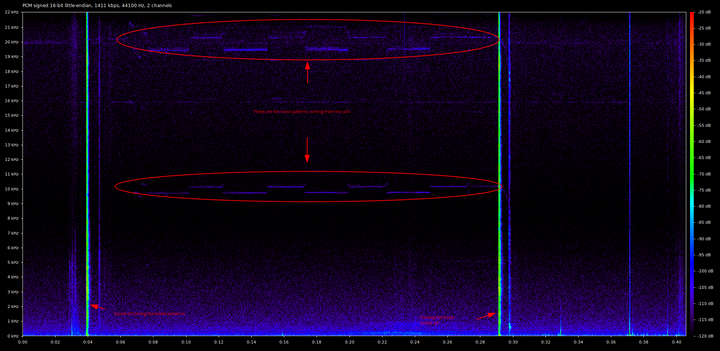
I got in touch with Herschel who sent a replacement unit to test if it had the issue as well, because it turned out that a lot of people can't hear the noise in these recordings. Unfortunately it also had it, but this time I made a more complex measurement. When WiFi traffic was applied the noise changed significantly.
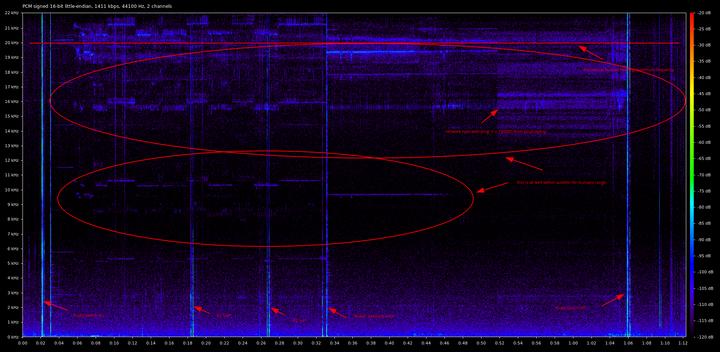
I started digging to see what might be making the whine and I had a feeling it's the WiFi module, but in the process I became rather sure these are customised Tuya units7. I have a strong itch against WiFi based Tuya because of their Chinese cloud, which these would have had to go through to be smart, so I had one more reason to be unhappy with them. These are also special with their 2 way RF communication, so Tasmota is not an option.
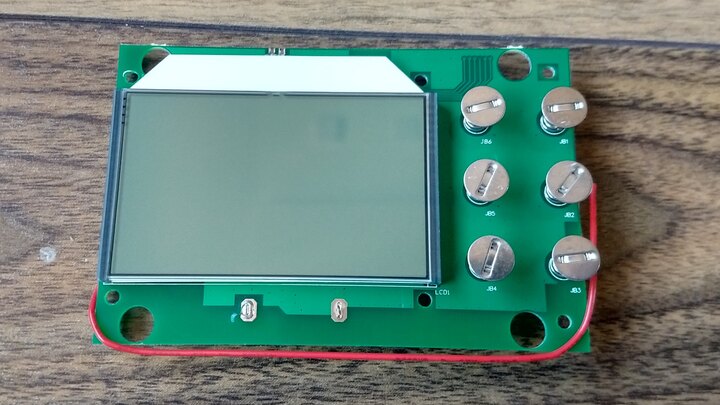
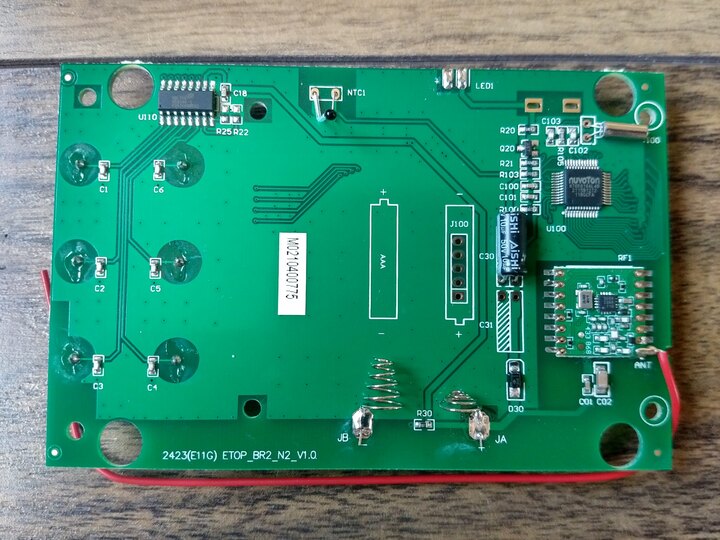
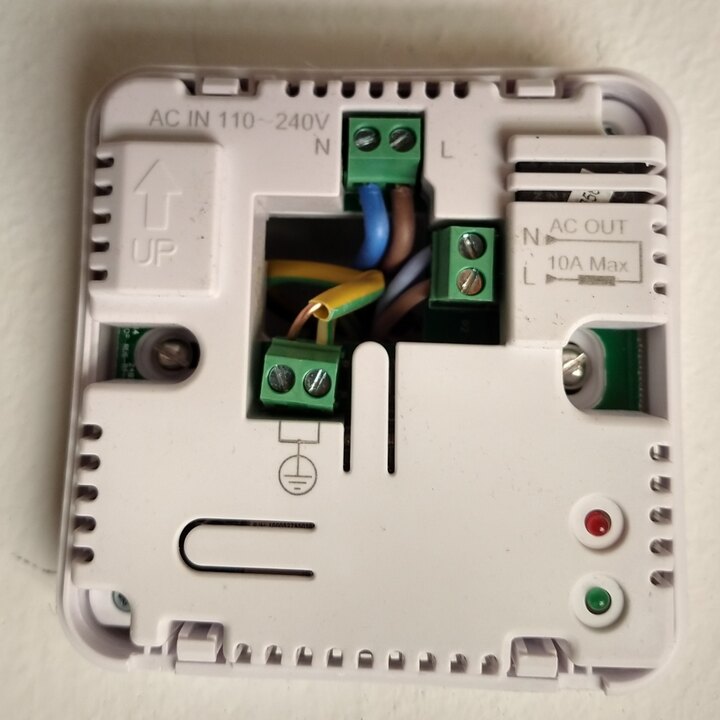
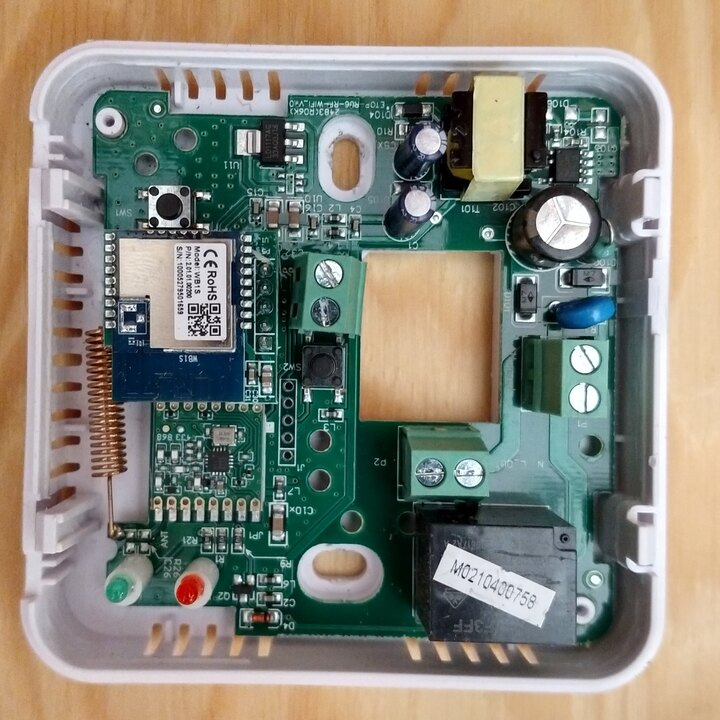
While I got refunded for these units once they were sent back, and Herschel didn't make any problems with the refund process, the rest of the message wasn't ideal:
I am saddened to hear that the replacement receiver from our latest batch is also audible to you. As I mentioned we have sold these receivers in vast numbers, (thousands), and you are only the second person to report the noise, but I fully appreciate it is a problem for you.
I find it mildly offending to sell these with the excellent quality German panels to be honest. Our current battery powered, Z-Wave based boiler controller, (re)branded as "Secure"8 is far superior to these units - though they come with their own issues without additional z-ware routers in a house -, but the switch is rated only to 3A. I'm sure that with minor modifications it could take up to 10A and would be a significantly better fit with the Inspire line, particularly from a privacy/security perspective.
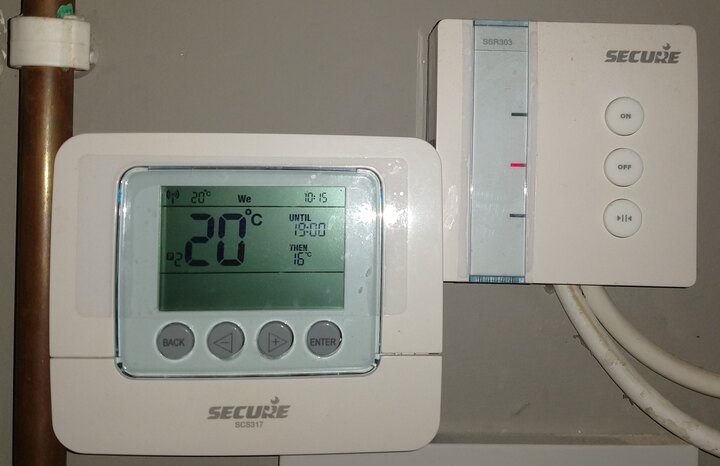
Looking for alternatives, settling with Zigbee (3.0)
I went through my options: I had some issues with Z-Wave before, learned that KNX would cost more, than the system installed, skipped a lot other things, until I bumped into Zigbee 3.0.
I bought Sonoff ZBMINIs9 to be the controllers, which are great, and carelessly went for Aqara temperature and humidity sensors. Don't buy Aqara unless you go all-in with the brand. I had to sell those and buy Sonoff SNZB-02 Temperature and Humidity Sensors10 because some of the Aqara devices kept stopping sending data no matter what I did. The host controller is a Sonoff ZigBee 3.0 USB Dongle Plus P11, which feeds into Zigbee2MQTT12 which sends to Mosquitto13 which talks to Domoticz14.
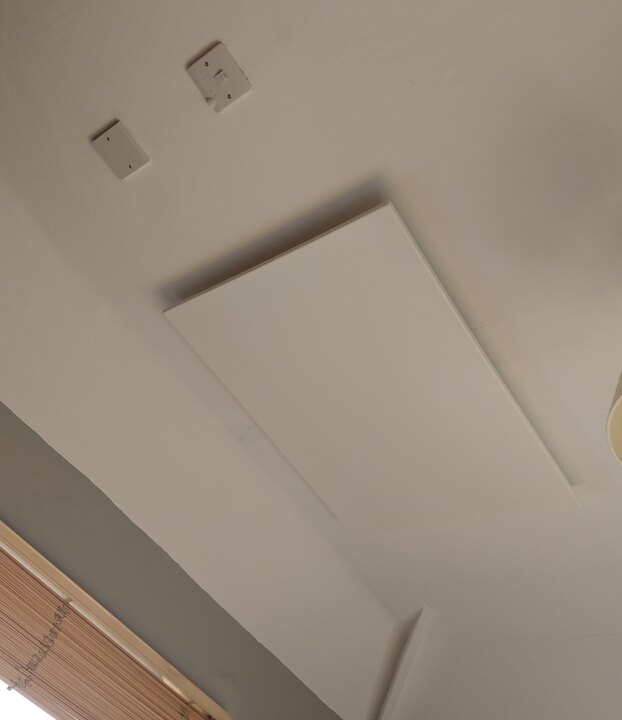
There's an alternative firmware for the SNZB-02-s15
which would turn them into a real thermostat with binding - I've been
testing one for a while, and so far, it's surprisingly nice. I haven't
had the time to replace the firmware on all of them (it includes some
temporary soldering), but there are plans to do so.
I tested the EFEKTA firmware. It worked for a few weeks, and yes, it can be used as a standalone thermo/humidistat, but after some time it started to transmit multiple temperature values simultaneously, making the FIR to stay on all the time, so I decided to drop the experiment and stay with the stock firmware on the SNZB-02s.
One day I might have time to write about this setup in more
details, but here's an important bit: for reasons I'm yet to identify
why, but the initial setup with a Raspberry Pi 3B was unstable, and the
Pi kept rebooting. I bought another fanless Lenovo M60016
and it's been rock solid since.
I finally found a solution to my interface problem: I bought a
used "2-in-1" PC, namely a Dell Venue Pro 714017.
It's maintainable, has a dock, a nice touchscreen, and can act as the
server on it's own, and it has a full sized USB port, so it was possible
to add the Zigbee stick. To my surprise, it has a fan, but once it was
set into powersave mode, it barely ever came up. The OS is Ubuntu 22.04,
because I wanted a full touch-screen support, and this was the simplest
way to do so.
The Dell, out of the blue, died so hard that I couldn't boot it. Turned out that if the battery has any issue in it the charger alone can't power the device. Back to the fanless Lenovo M60018 and, for the time being, a tablet to control it, because proper touchscreens cost an arm and a leg.19
Domoticz vs thermostats
I tried Home Assistant many times but I find their YAML configurations repulsive: it's practically random and complicated. Yes, there is documentation, and it's OK, but I'll take a programming language any timer over that YAML horror. Once it told me that python 3.9, which is the Python in the current stable Debian, will be deprecated for HA in 2023 I walked away for good.
Domoticz on the other hand is small, simple (maybe sometimes even too simple), and can be scripted with a lot of languages, including it's own dialect of Lua, called dzVents20. So I did the following: I created virtual thermostats for each room, a virtual boost switch for each room, than added a script that connected these to the state changes of the relevant temperature sensors and switches in each room. The "sufni" (shed in Hungarian) is special because that's an oil radiator and it only ever comes up when the shed goes below 4°C - I have some paint there which shouldn't be allowed to freeze.
return {
on = {
devices = {
'Háló', 'Gyerekszoba', 'Kisszoba', 'Fürdő', 'Lépcsőfeljáró',
'Folyosó', 'Nappali', 'Stúdió', 'Konyha',
'Sufni',
'Háló termosztát', 'Gyerekszoba termosztát', 'Kisszoba termosztát', 'Fürdő termosztát', 'Lépcsőfeljáró termosztát',
'Folyosó termosztát', 'Nappali termosztát', 'Stúdió termosztát', 'Konyha termosztát',
'Sufni termosztát',
'Háló boost', 'Gyerekszoba boost', 'Kisszoba boost', 'Fürdő boost', 'Lépcsőfeljáró boost',
'Folyosó boost', 'Nappali boost', 'Stúdió boost', 'Konyha boost',
},
},
logging = {
marker = '[thermostat]',
},
execute = function(domoticz, device)
local basename = string.gsub(string.gsub(device.name, ' termosztát', ""), ' boost', "")
local thermostat = domoticz.devices(basename .. ' termosztát')
local temperature_sensor = domoticz.devices(basename)
local boost = domoticz.devices(basename .. ' boost')
local heater = nil
local hysteresis = nil
if (basename == 'Sufni') then
hysteresis = 1
heater = domoticz.devices(basename .. ' olajradiátor')
else
hysteresis = 0.3
heater = domoticz.devices(basename .. ' FIR')
end
if ((device.id == boost.id) and (boost.active == true)) then
boost.switchOff().afterSec(900)
if (heater.active == false) then
domoticz.log(basename .. ' ON (boost)', domoticz.LOG_INFO)
heater.switchOn()
end
end
if ((boost.active == false) and (heater.active == true) and (temperature_sensor.temperature >= (thermostat.setPoint + hysteresis))) then
domoticz.log(basename .. ' OFF (thermostat)', domoticz.LOG_INFO)
heater.switchOff()
end
if ((heater.active == false) and (temperature_sensor.temperature <= (thermostat.setPoint - hysteresis))) then
domoticz.log(basename .. ' ON (thermostat)', domoticz.LOG_INFO)
heater.switchOn()
end
end
}The schedule is done with timers on each thermostat:

It works as expected, without issues.
Energy needs and running cost
The end of 2022 was quite nice in terms of weather at the beginning, but December brought serious colds - in the past 10 years we lived in the UK and I haven't experienced periods in Cambridge where the temperature barely moved above zero for days:

We decided to run a test and see the cost if we rely solely on the panels to heat. While they were able to handle it and heat up the house, which is good, the cost was brutal. Keep it in mind that we regularly wash, use the dryer, cook, and work from home, so the only thing we used gas for was hot water on 11 Dec. The drop you see later is when we decided to turn the gas heating back on between 09:00 and 17:00 so the clicking and the noise doesn't bother us during the night.


Does far infrared heating work?
In my experience, yes. It's lovely using them, the heat is instant and stays with the house. The heat does eventually get everywhere, it will not be "shaded" by desks and furniture more, than a heating panel or a type 10/20 wet unit would be by furniture.
It is, however, different, and with regular thermostats that have 1-2°C hysteresis, it could be tricky to make them perfect.
I'd seen a video on youtube about someone telling that a 1kW FIR panel barely heats him up sitting next to it. If I sit in front of our 200W portable it already heats me up and the 900W panels in the bedrooms can easily deal with the rooms. It might just be the difference between cheap panels and expensive ones, so be very careful on choosing a brand.
The only thing we had a problem with is the humidity and green mould (like the one on stale bread) in the bathroom on some baskets of ours in the aforementioned December period, but we weren't the only ones, so I can't yet tell if it was due to the new heating, or the mixture of other circumstances.
Conclusions, observations, summary
The way FIR heats feels nicer, than many other heating methods: it's able to heat you up at some deep level very fast, but as the electrician installing them said: it's more "digital" whereas floor heating, for example, is more "analogue".
The panels radiate from their back as well, meaning putting the upstairs ones on the walls instead of the ceiling could result in better use of that heat - that is if the wall is made of material that can "store" heat - solid walls would be ideal - and not from clinker blocks, like ours.
Some of the ceilings developed hairline cracks behind the heaters, but only upstairs, with the loft and the insulation above them. I'm guessing it's where the plasterboards meet, and I'm yet to address them.
SONOFF is reliable, cheap, and generally speaking just works.
Mixing Zigbee 3.0 and 1.2 can result in the 1.2 devices losing their way and stopping sending data.
This type of heating makes more sense when it's combined with solar panels, battery storage, and utilising varying electricity costs throughout the day. On single tariff it will be expensive, just like plain electric heating.
Was it worth it? Even with devastating energy prices I believe that in the long run, it was. When we get to the point to replace the boiler with an electric one as well21 we can get rid of the gas, the radiators, which will free up a lot of space. Plus I like how they look on the ceiling, making it less boring and less usual - although this is a subjective thought.
(Oh, by the way: this entry was written by Peter Molnar, and originally posted on petermolnar dot net.)
Responses from the internet
https://stream.jeremycherfas.net/2023/my-only-experience-with-far-infra-red-heating